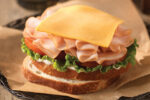When baking, achieving consistent results can be tricky if you don’t understand how oven heat is distributed. Some parts of the oven get hotter than others, leading to uneven cooking or baking. So what exactly are the hot spots in your oven, and what is the hottest part?
Read on for a guide to identifying and working with your oven’s hot zones for better baking success.
Where is Heat Distributed in an Oven?
Oven heat is not dispersed equally throughout the oven cavity. Here is how it typically flows:
-
The hottest zones are around the oven periphery – the top, bottom, sides, door, and back wall.
-
Heat gradually decreases as you move towards the center of the oven.
-
The very center of the oven tends to be the most moderate and even in temperature.
-
Multiple heating elements create more variation between hot and cool zones.
-
The closer a pan is to a hot perimeter, the more intense the heat exposure.
-
Convection ovens distribute heat more evenly than standard ovens.
So the extreme outer edges of the oven will be hottest, while the very center is moderate. Understanding this uneven heat distribution is key for ideal baking results.
What is Usually the Hottest Part of a Standard Oven?
For most standard ovens, the hottest area is the top third, closest to the top heating element.
Even when the heat source is at the bottom, rising heat combined with the proximity to the metal top makes this upper area the hottest. The top oven rack will heat foods fastest.
The bottom third of the oven is next hottest, again due to being closest to a heat source and metal surface. The bottom oven rack exposes food to intense bottom heat.
The side, back, and door areas are also quite hot, while the center is usually the most moderate. However, each oven has unique hot and cool zones.
Tips for Identifying Your Oven’s Hot Spots
To locate your unique oven hot spots, do a simple toast test:
-
Place oven racks in normal baking positions. Preheat to 350°F.
-
Arrange slices of bread on the racks, covering all areas.
-
Bake until center slices are lightly browned, about 10 minutes.
-
Check the toast on all racks, top and bottom. The most toasted slices mark the hottest spots.
Look for variations in browning intensity and color. The toast provides a heat map of your oven’s unique temperature variations.
How to Work With Oven Hot Spots
Once you identify your oven’s hot zones, use that intel to optimize baking:
-
For most even baking, place pans and trays in the oven center.
-
Avoid edges and perimeter areas for items prone to burning.
-
Place breads and pizzas on the top rack or rim to brown/crisp the top.
-
Use the bottom rack/floor for pizza stones and pans needing bottom heat.
-
Rotate pans halfway through baking to compensate for uneven heat.
-
Stagger pans to allow for hot zone avoidance as needed.
-
For multiple-rack baking, keep perimeter areas open if possible.
Taking oven hot spots into account allows you to position bakeware for ideal results. You can use the zones to your advantage.
Common Oven Hot Spot Problems
Be aware of these common baking issues related to oven hot zones:
-
Cookies burning on the bottom – Caused by too much direct bottom heat. Use higher racks.
-
Pie edges browning too fast – Perimeter areas near oven walls get overly hot. Cover edges with foil.
-
Cakes rising unevenly – One side is closer to an oven hot spot. Rotate pan halfway through baking.
-
Pizza burning on one side – Place stone/pizza away from oven ceiling or rear wall.
-
Bread pale on top or bottom – Needs to be nearer top or bottom heat. Adjust rack height.
-
Pan edges over-browning – Too close to oven sides. Center pans, stagger multiple pans.
Adjusting pan position is typically the easiest fix for any hot spot problems.
Tips for Minimizing Oven Hot Spots
While you can’t eliminate oven hot spots entirely, you can minimize the intensity of the extremes:
-
Place a pizza stone on the floor or bottom rack to diffuse intense bottom heat and even out temperatures.
-
Create a “heat sink” by placing a baking stone or cast iron pan on an upper rack to absorb excess top heat.
-
Install a fan near the oven to equalize perimeter hot spots.
-
Clean oven windows and walls so they reflect heat back into the oven evenly.
-
Upgrade to a convection oven – the fan helps distribute heat more uniformly.
-
Install an additional baking element to supplement uneven heating from a single element.
-
Replace old heating elements that may be distributing heat unevenly.
While you likely can’t modify your oven design, small adjustments like adding stones can help compensate for hot spots.
Common Questions About Oven Hot Spots
Here are some common questions people have about hot and cold zones in their ovens:
What causes oven hot spots?
The proximity to the heat source and metal surfaces causes peripheral areas to become hot spots. The center is more insulated and maintains a more moderate temperature.
What is the best way to test for oven hot spots?
The classic toast test outlined above allows you to map your oven’s hot spots in about 10 minutes. Look at top and bottom browning of toast placed throughout the oven.
Should I only bake in the center of the oven?
While the center is best for very even baking, you can use your oven’s hot zones to your advantage based on the item you’re baking. The zones provide flexibility.
Can I eliminate oven hot and cold spots entirely?
You can minimize but not fully eliminate them in a standard home oven. Convection ovens will have the most uniform heat distribution.
Will a baking stone help oven hot spots?
Yes, stones absorb and distribute heat more evenly. Place one on the oven floor or bottom rack to combat excessive bottom heat in particular.
Understanding how your oven’s hot spots impact baking is an important step towards achieving consistent results. With a few simple tools like the toast test and thermometers, you can identify hot and cool zones and adjust your process for bakes that turn out right every time.
https://www.cheftalk.com/threads/hottest-part-of-the-oven.28125/
https://www.quora.com/Why-in-gas-ovens-is-the-top-of-the-oven-the-hottest-part



